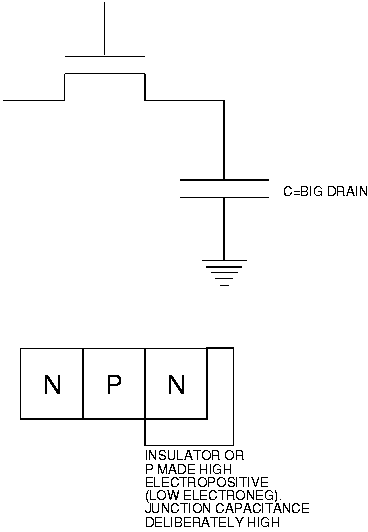
this maximizes density.

the transistor is a special FET, optimized for bidirectionality as well as drain capacitance.
ordinarily transistors are manufactured assymetrically, for maximum common base (common gate) current gain.
MOSFETS: ordinarily gate is to one side, so you can't easily exchange S and D, and still get good performance.
in the memory cell, however, we wish to have it be bidirectional, so you can charge or discharge the drain capacitor.
accordingly, if the gate is centered, the MOSFET can be used both ways.
to write a zero, connect the input to +5v and turn on gate;
to write a 1 connect input to ground and turn on gate.
ordinarily transistors are manufactured assymetrically, for minimum junction capacitance.
however, in DRAM, we deliberately make the drain have a large capacitance, so an external capacitor is not needed.